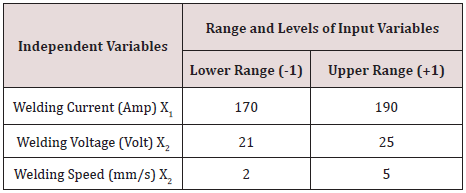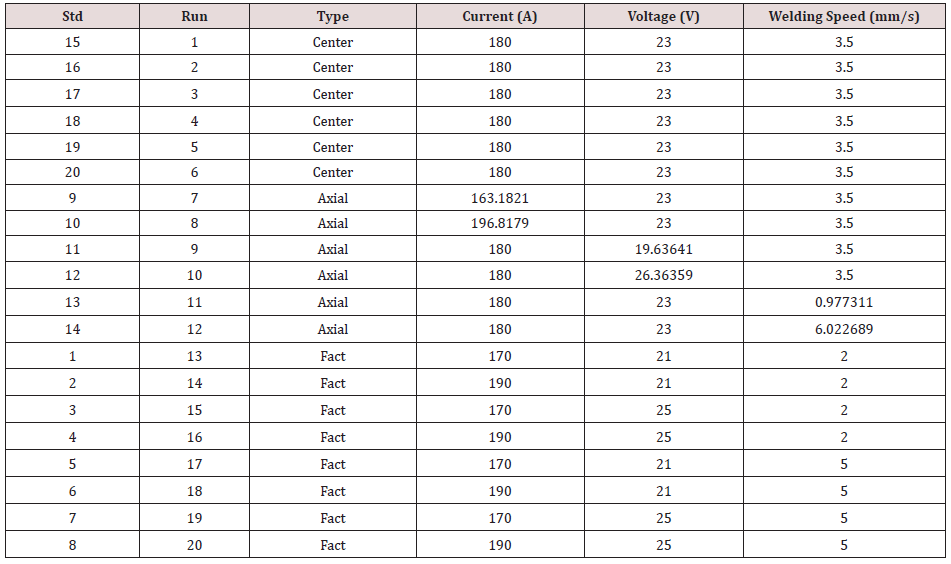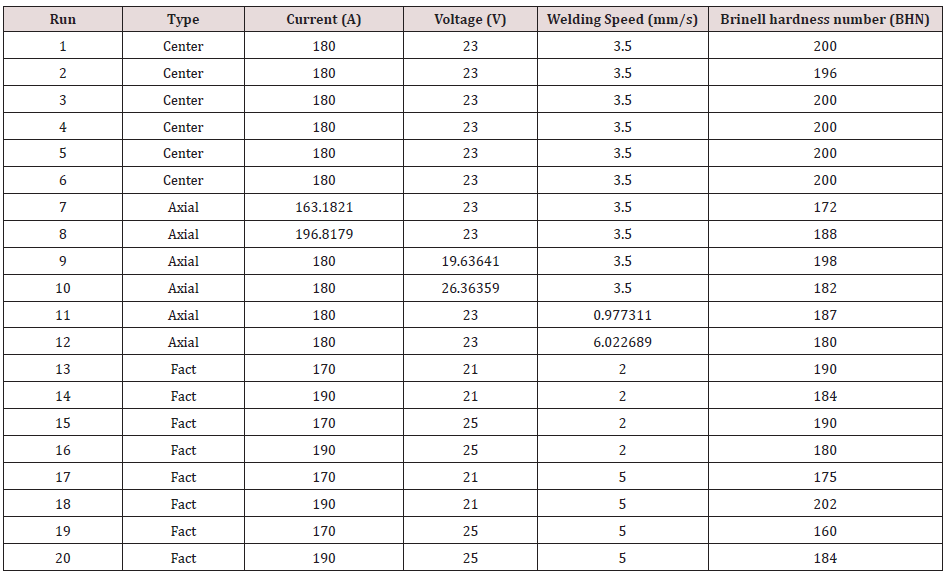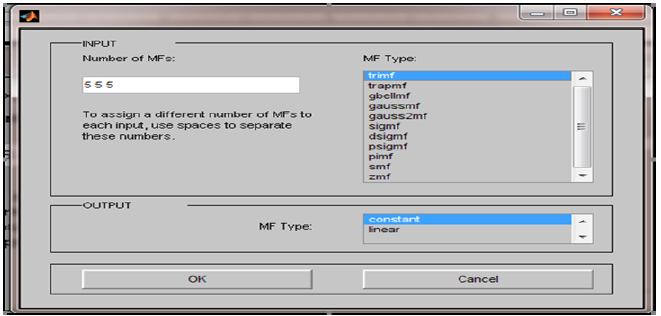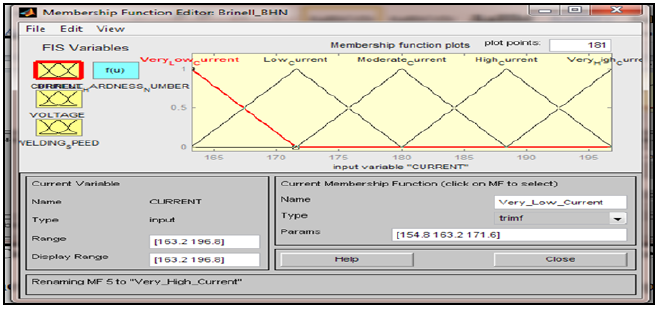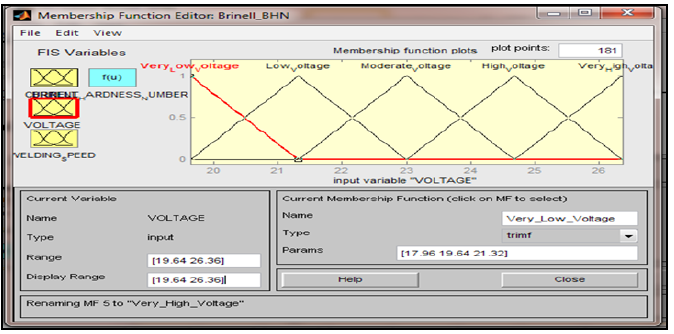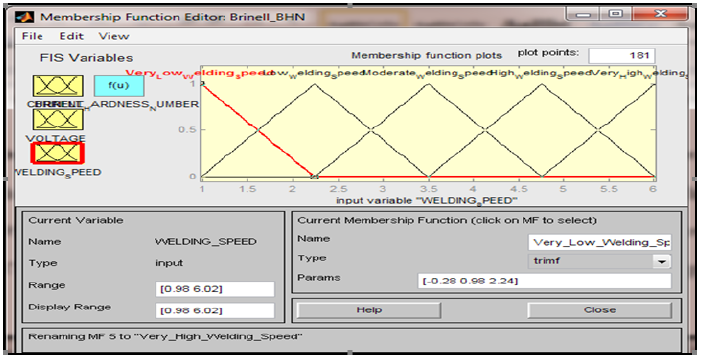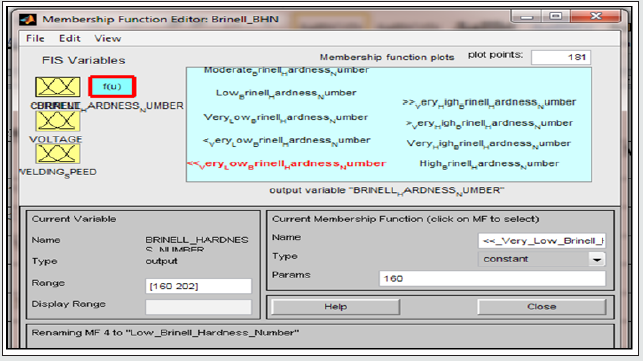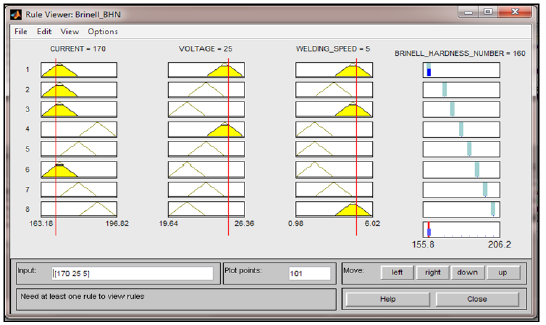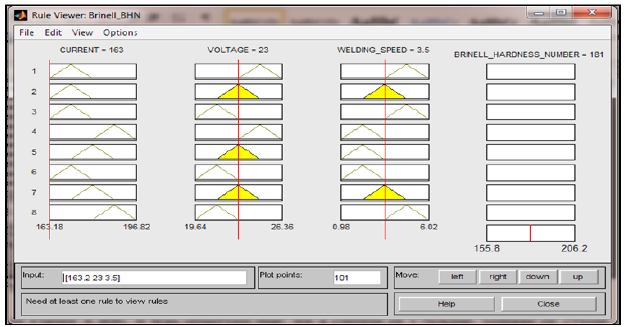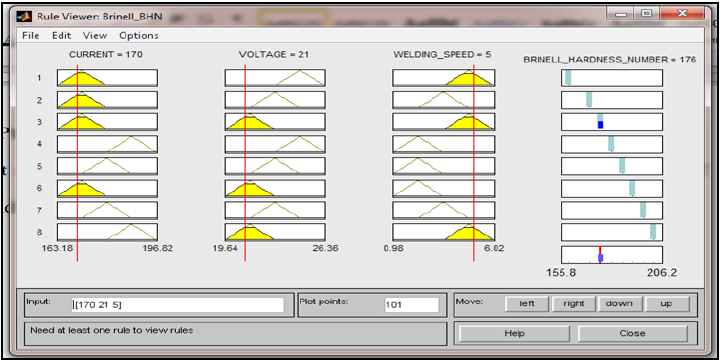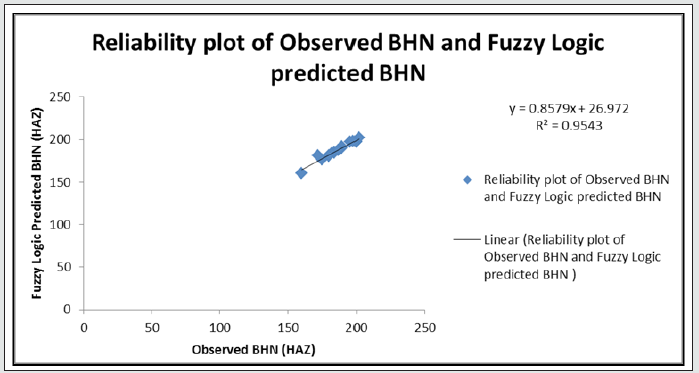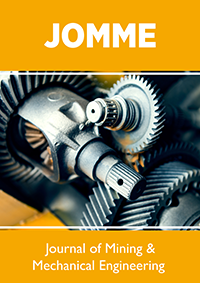
Lupine Publishers Group
Lupine Publishers
Menu
ISSN: 2690-5779
Research Article(ISSN: 2690-5779) 
Prediction of Brinell Hardness Number; A TIG Process Parameter Needed to Eliminate Post Weld Crack Formation and Stabilize Heat Input in Mild Steel Weldment Using Fuzzy Logic (FL) Volume 1 - Issue 4
Pondi P1*,Achebo J2 and Obahiagbon K3*
- 1Department of Production Engineering, University of Benin, Nigeria
- 2Department of Production Engineering, University of Benin, Nigeria
- 3Department of Chemical Engineering, University of Benin, Nigeria
Received:March 26, 2021 Published: April 22, 2021
Corresponding author: Obahiagbon K, Department of Chemical Engineering, Faculty of Engineering, University of Benin, P.M.B 1154, Benin City, Edo State, Nigeria
DOI: 10.32474/JOMME.2021.01.000120
Abstract
The Brinell hardness number (BHN) is the load divided by the surface area of indentation. The diameter of the impression is measured with a microscope with a superimposed scale. BHN remains vital parameters for the assessment of weld quality and also to eliminate post weld crack formation. The focus of this study is to predict tig process parameter such as Brinell hardness number (BHN) for eliminating post weld crack formation, and stabilizing heat input in mild steel weldment. The key input parameters considered in this work are welding current, welding voltage and welding speed while the response or measured parameter is Brinell hardness number (BHN). Using the range and levels of the independent variables, statistical design of experiment (DOE) using central composite design (CCD) method was done. Hundred (100) pieces of mild steel coupons measuring 60 x 40 x10 were used for the experiments. The experiment was performed 20 times, using 5 specimens for each run. The plate samples were 60 mm long with a wall thickness of 10mm. The samples were cut longitudinally with a Single-V joint preparation. The tungsten inert gas welding equipment was used to weld the plates after the edges have been bevelled and machined. The welding process uses a shielding gas to protect the weld specimen from atmospheric interaction. For this study, 100% pure Argon gas was used. The weld samples were made from 10mm thickness of mild steel plate; the plate was cut to size with the power hacksaw. The edges grinded and surfaces polished with emery paper and the joints welded and thereafter, the response (Brinell hardness number) was measured, recorded, and analysed using fuzzy logic.
From the result, it was observed that; for a current of 170Amp, voltage of 25volt, and welding speed of 5.0mm/s, the predicted Brinell hardness number was 160HAZ and for a current of 163.18Amp, voltage of 23volt, and welding speed of 3.50mm/s, the predicted Brinell hardness number was 181.0HAZ while for a current of 170Amp, voltage of 21volt, and welding speed of 5.0mm/s, the predicted Brinell hardness number was 176HAZ
Keywords:Tig Process Parameters; Brinell Hardness Number (BHN); Fuzzy Logic; Statistical Design of Experiment (DOE); Tungsten Inert Gas Welding
Introduction
Most of the structural failures happening today is because of poor weld strength Palani et.al. [1] These welding failures are mostly influenced by improper combination of the welding process factors Marseguerra et al. [2] The quality and strength of a weld is characterized by the reduction and elimination of weld defects such as cracks, undercut, deformation, porosity [3] in addition to controlling the heat input which is a very strong determining factor needed to produce a reliable weld Shubhavardhan et. al. [4] One of the fundamental issues facing Engineers in the manufacturing sector is the problem of choosing the most suitable combinations of input process parameters to achieve the required optimum weld bead quality Springer et.al. [5] It is a well-known fact that most welders mainly focused on [6] bead geometry and aesthetics of the weld structure, but the reduction in post weld cracks which determines the overall quality of weldment has not been paid much attention Navid et.al.[7] These problems can be solved with the development of mathematical models through effective and strategic planning, design, and execution of experiments Vikram et.al [8]
Research Methodology
The key input parameters considered in this work are welding current, welding voltage and welding speed while the response or measured parameter is Brinell hardness number (BHN). The range and level of the experimental variables used for statistical design of experiment are presented in (Table 1)
Using the range and levels of the independent variables presented in (Table 1), statistical design of experiment (DOE) using central composite design (CCD) method was done. The total number of experimental runs that can be generated using the CCD is defined as.
Were.
N: is the number of experimental runs based on CCD design
2n; is the number of factorial points
n0; is the number of center points
2n; is the number of axial points
N; is the number of variables
Using (Equation 1), twenty (20) experimental runs were generated based on the central composite design method and presented in (Table 2).
Applying the design of experiment presented in (Table 2), 100 pieces of mild steel coupons measuring 60 x 40 x10 were used for the experiments. The experiment was performed 20 times, using 5 specimens for each run. The plate samples were 60 mm long with a wall thickness of 10mm. The samples were cut longitudinally with a Single-V joint preparation.
The tungsten inert gas welding equipment was used to weld the plates after the edges have been bevelled and machined. The welding process uses a shielding gas to protect the weld specimen from atmospheric interaction. For this study, 100% pure Argon gas was used. The weld samples were made from 10mm thickness of mild steel plate; the plate was cut to size with the power hacksaw. The edges grinded and surfaces polished with emery paper and the joints welded and thereafter, the responses were measured and recorded. The measured response corresponding to the input variable is presented in (Table 3)
For the analysis of the measured variable (heat input), fuzzy logic was employed. The underlying equations of fuzzy logic are presented as follows.
Fuzzy Logic Modeling
The underlying equations of fuzzy logic adopted from Chang et al., 2008 is presented as follows.
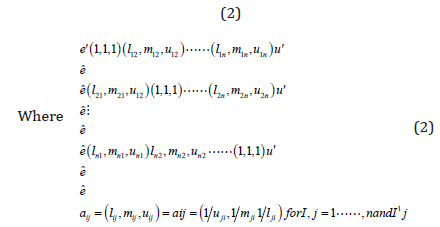
To calculate a priority vector of the above triangular fuzzy comparison matrix, the following five equations were used: First, a fuzzy comparison operation was employed to sum up each row of the fuzzy comparison matrix

Secondly, the row sums were normalized using
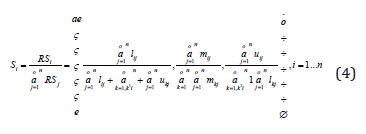
Thirdly, the degree of possibility of

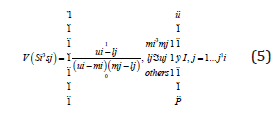
Where the possibility degree is

The degree of possibility of


Finally, the priority vector



The basic steps involved in the application of fuzzy logic in predicting tig process parameters required to eliminate post weld crack formation and stabilize heat input in mild steel weldment are as follows.
A. Definition of input and output variables
B. Conversion of crisp variables into fuzzy sets
C. Definition of membership functions for each inputs and output
D. Creation of fuzzy rules
E. Simulation
Definition of Input and output Variables
a) First, sets of input variables, namely, current, voltage and welding speed were selected
b) The range and values of the selected input variables were then defined based on expert knowledge
For a fuzzy logic model aimed at predicting Brinell hardness number (BHN), we assumed that the weld factors, namely, current (c), voltage (v) and welding speed (ws) be termed the linguistic variables. To qualify the current, voltage and welding speed, terms such as (very low, low, moderate, high and very high) were used. These are the linguistic values of the current, voltage and welding speed. Therefore,
C (c) = {very low, low, moderate, high and very high}
V (v) = {very low, low, moderate, high and very high}
WS (ws) = {very low, low, moderate, high and very high}
In the same way, the output variable Brinell hardness number (BHN) was qualified in real term as:
(BHN) = {very low, low, moderate, high and very high}.
The terms in bracket represent the set of decompositions for the linguistic variable current, voltage, welding speed and Brinell hardness number (BHN). Each member of this decomposition is called a linguistic term. For this problem, the linguistic variables and their range of values include:
a) Current; this ranges from 170 to 190 amps
b) Voltage: this ranges from 21 to 25 volts
c) Welding speed: this ranges from 2 to 5 mm/s
d) Brinell hardness number (BHN); this ranges from 160 to 202 HAZ
The fuzzy logic toolbox that defines the input and output variables is presented in (Figure 1).
Conversion of Crisp Variables to Fuzzy Sets
To convert the crisp variables to fuzzy sets, adaptive neurofuzzy inference systems (ANFIS) was employed. The basic steps in the application of ANFIS are as follows:
The three critical input variables were coded using a, b, c,
a) The members of the variables were also defined.
b) A simple MATLAB programmer that connects the input and output variables was then written. To generate the fuzzy inference systems (FIS), grid partition method was employed owing to its ability to handle large input variables and generate the needed fuzzy sets.
Definition of membership function
a) Five membership function were selected for each input variables and output variables, namely, very low, low, moderately high, high and very high as presented in (Table 3).
b) For the input variables, the triangular membership function (trim) was used while the constant membership function was used for the output variable.
Creation of Fuzzy Rules
In a fuzzy logic system, a rule base is constructed to control the output variable. A fuzzy rule is a simple IF-THEN rule with a condition and a conclusion. Based on the summary results presented in (Table 3), eight (8) critical rules were constructed to predict the Brinell hardness number based on fuzzy logic as follows.
a) If current is low, and voltage is high and welding speed is high, then Brinell hardness number is (<< very low Brinell hardness number)
b) If current is low, and voltage is moderate and welding speed is moderate, then Brinell hardness number is (very low Brinell hardness number)
c) If current is low, and voltage is low and welding speed is high, then Brinell hardness number is (low Brinell hardness number)
d) If current is high, and voltage is high and welding speed is low, then Brinell hardness number is (moderate Brinell hardness number)
e) If current is moderate, and voltage is moderate and welding speed is low, then Brinell hardness number is (high Brinell hardness number)
f) If current is low, and voltage is low and welding speed is low, then Brinell hardness number is (very high Brinell hardness number)
g) If current is moderate, and voltage is moderate and welding speed is moderate, then Brinell hardness number is (> very high Brinell hardness number)
h) If current is high, and voltage is low and welding speed is high, then Brinell hardness number is (>> very high Brinell hardness number)
i) Fuzzy logic simulation Based on the rules, series of simulation were done to evaluate the capacity of fuzzy logic in predicting the Brinell hardness number (BHN) of a welding material
Results and Discussion
Generation of fuzzy sets from the crisp variables
(Figure 2) shows the interface of adaptive neuro fuzzy (anfis) containing the fuzzy sets for the three input variables, namely, current, voltage and welding speed including the single output variable which is the Brinell hardness number (BHN). Five membership functions were selected for each input variable. For this problem, the triangular membership function (trimf) was used. The simplicity and flexibility of the triangular membership function coupled with its ability to define wider range of decomposed sets of linguistic variables account for its selection. For the output variable, five membership functions were also used. Unlike the input variables, the constant membership function (conmf) was used to define the output variable owing to its simplicity. Figure 3 shows the membership function defined for the input and output variables.
Defining the inputs and output Membership Function
Membership functions are used in the fuzzification and defuzzification steps of a Fuzzy Logic Systems (FLS), to map the non-fuzzy input values to fuzzy linguistic terms and vice versa. A membership function is used in most cases to quantify a linguistic term. An important characteristic of fuzzy logic is that a numerical value does not have to be fuzzified using only one membership function. In other words, a value can belong to multiple sets at the same time. Five membership functions were selected for each input and output variable namely, very low, low, moderately high, high and very high. (Figures 4a, 4b, 4c and 4d) shows the definition of the membership function for current, voltage, welding speed and Brinell hardness number representing the three input variables and one output variable. (Figure 4a) shows the membership function for current. The current range is specified as [163.2 196.8] while the membership set that defines very low current is given as [154.8 163.2 171.6]. The membership function type is the triangular membership function. (Figure 4b) shows the membership function for voltage. The voltage range is specified as [19.64 26.36] while the membership set that defines very low voltage is given as [17.96 19.64 21.32]. The membership function type is the triangular membership function. (Figure 4c) shows the membership function for welding speed (WS). The WS range is specified as [0.98 6.02] while the membership set that defines very low welding speed is given as[-0.28 0.98 2.24]. The membership function type is the triangular membership function. (Figure 4d) shows the membership function for brinell hardness number. The range for brinell hardness number is specified as [160 202] while the membership set that defines (<< very low brinell hardness number is given as [160]. The membership function type is the constant membership function. Using the information on (Figure 4d), the following additional membership sets were generated and presented in (Table 4)
Predicting Brinell hardness number (BHN) using Fuzzy Logic
Using the eight critical rules, fuzzy prediction of Brinell hardness number (BHN) was done using fuzzy and some of the results obtained are presented in (Figures 5a, 5b, and 5c) respectively. From the result of (Figure 5a), it was observed that; for a current of 170Amp, voltage of 25volt, and welding speed of 5.0mm/s, the predicted Brinell hardness number was 160HAZ. From the result of (Figure 5b), it was observed that; for a current of 163.18Amp, voltage of 23volt, and welding speed of 3.50mm/s, the predicted Brinell hardness number was 181.0HAZ. From the result of Figure 5c, it was observed that; for a current of 170Amp, voltage of 21volt, and welding speed of 5.0mm/s, the predicted Brinell hardness number was 176HAZ. From the other simulations, it was observed that.
a) For a current of 190Amp, voltage of 25volt, and welding speed of 2.0mm/s, the predicted Brinell hardness number was 181HAZ
b) For a current of 170Amp, voltage of 21volt, and welding speed of 2.0mm/s, the predicted Brinell hardness number was 192HAZ
c) For a current of 180Amp, voltage of 23volt, and welding speed of 3.50mm/s, the predicted Brinell hardness number was 197HAZ
d) For a current of 190Amp, voltage of 21volt, and welding speed of 5.0mm/s, the predicted Brinell hardness number was 202HAZ
To assess the overall performance of fuzzy logic in predicting Brinell hardness number (BHN), a regression plot of output between the observed BHN and fuzzy logic predicted BHN was obtained and presented in (Figure 6) With a coefficient of determination R2 value of 0.9543, it was concluded that Fuzzy logic systems can be employed for the prediction of Brinell hardness and other weld parameters.
Conclusion
The fuzzy logic prediction platform developed in this study can serve as suitable alternative to the popular but complex machine learning algorithm such as random forest for the prediction of weld parameters. In addition, since Brinell hardness number (BHN) is an important parameter that can be employed to measure the quality of weld, therefore accurate prediction of Brinell hardness number (BHN) by means of fuzzy logic will would be an important breakthrough in the welding and fabrication industry
References
- Palani PK, Murugan N (2006) Prediction of delta ferrite content and effect of welding process parameters in claddings by FCAW. Materials and Manufacturing Processes 21(5): 431- 438.
- Marseguerra M, Zio E, Podofillini L (2002) Condition-based Maintenance optimization by means of genetic algorithms and Monte Carlo simulation. Reliability Engineering and System Safety 77(2): 151-165.
- Chatzinikolaidou M, Zumbrink T and Jennissen HP (2003) Stability of Surface-Enhanced Ultrahydrophilic Metals as a Basis for Bioactive rhBMP-2 Surfaces. material science & Engineering techlogy 34 (12): 1106-1112.
- Shubhavardhan RN Surendran S (2012) Friction welding to join Stainless Steel and Aluminum materials. International Journal of Metallurgical and Materials Science and Engineering (IJMMSE) 2(3): 53-73.
- Springer H, Kostka A, Dos-Santos JF, Raabe D (2011) Influence of intermetallic phases and Kirkendall-porosity on the mechanical properties of joints between steel and aluminum alloys. Materials Science and Engineering 528(13-14): 4630-4642.
- Chang N, Parvathinathanb G, and Breden JB (2008) Combining GIS with fuzzy multi-criteria decision making for landfill siting in a fast-growing urban region. Journal of Environmental Management 87(1): 139-153.
- Navid N, Jill U (2016) Finite Element Analysis for Thermal Analysis of Laser Cladding of Mild Steel with P420 Steel Powder. Proceedings of the ASME 2016 International Mechanical Engineering Congress and Exposition, pp. 123-136.
- Vikram S (2013) An Investigation for Gas Metal Arc Welding Optimum Parameters of Mild Steel AISI 1016 using Taguchi‟s Method. International Journal of Engineering and Advanced Technology (IJEAT) 2(6): 54-63.

Top Editors
-

Mark E Smith
Bio chemistry
University of Texas Medical Branch, USA -

Lawrence A Presley
Department of Criminal Justice
Liberty University, USA -

Thomas W Miller
Department of Psychiatry
University of Kentucky, USA -

Gjumrakch Aliev
Department of Medicine
Gally International Biomedical Research & Consulting LLC, USA -

Christopher Bryant
Department of Urbanisation and Agricultural
Montreal university, USA -

Robert William Frare
Oral & Maxillofacial Pathology
New York University, USA -

Rudolph Modesto Navari
Gastroenterology and Hepatology
University of Alabama, UK -

Andrew Hague
Department of Medicine
Universities of Bradford, UK -

George Gregory Buttigieg
Maltese College of Obstetrics and Gynaecology, Europe -

Chen-Hsiung Yeh
Oncology
Circulogene Theranostics, England -
.png)
Emilio Bucio-Carrillo
Radiation Chemistry
National University of Mexico, USA -
.jpg)
Casey J Grenier
Analytical Chemistry
Wentworth Institute of Technology, USA -
Hany Atalah
Minimally Invasive Surgery
Mercer University school of Medicine, USA -

Abu-Hussein Muhamad
Pediatric Dentistry
University of Athens , Greece

The annual scholar awards from Lupine Publishers honor a selected number Read More...




